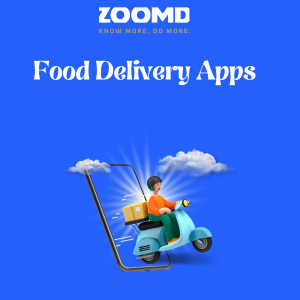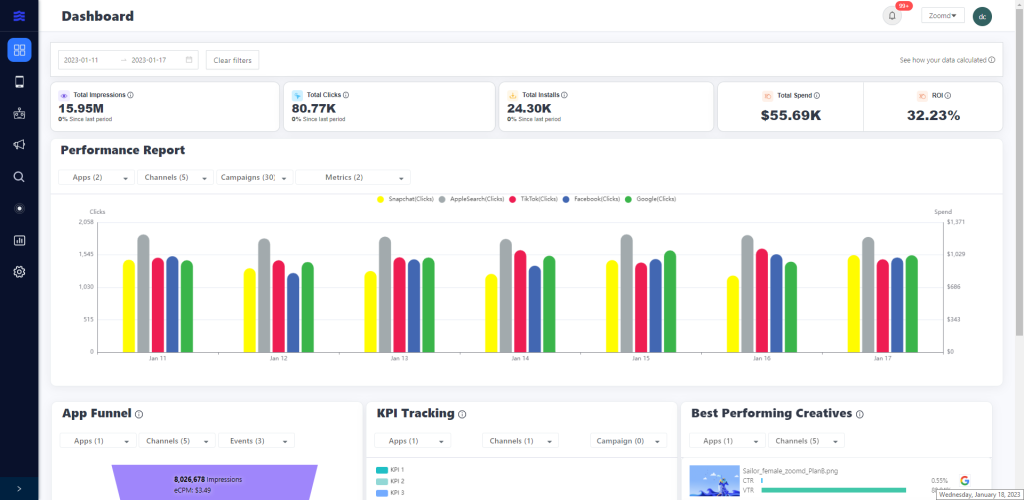The food delivery industry is booming, even in this current time as the world grapples with the Covid-19 pandemic fallout. Many businesses are feeling the pinch and delivery food apps are no exception.
In this current, post-Covid era, when people re-consider every order, it’s more important than ever for delivery food apps to find ways to maximize their reach and increase their customer base.
There are several ways to do so, for instance, companies like DoorDash are partnering with grocery stores and other retailers to provide delivery services, expanding the range of goods they can offer and enabling them to reach customers who may not have previously considered ordering through their platform.
One of the most effective ways to do this is through app install campaigns.
App install campaigns are a great way to reach potential new customers and increase downloads of your app. These campaigns can be targeted to certain demographic groups or geographic areas, and they can be tailored to fit the needs of your business. With the right approach, app install campaigns are a powerful tool for increasing your customer base and expanding your business.
App Marketing Strategy
App install campaigns can be conducted through various media channels, including online search, display, and video ads, as well as social media, email, and SMS. Online search ads are a great way to target users who are actively seeking out delivery food apps, or a certain promotion that might meet their budget. Display ads are a great way to reach passive customers who may not be actively searching, while video ads are an effective way to showcase the features and benefits of the app. Finally, social media, email, and SMS can be used to re-engage with existing customers and remind them to download or re-use the app.
To make sure you’re working smart and precise, here are key points to consider:
Audience:
First, invest in your user’s personas, and understand their different needs that will later be met by the creatives. Doing so will help you create more effective ads that will target the right people and make the most of your budget. It’s also important to focus on data insights to make sure you’re getting the best results from your campaigns. This will allow you to refine your strategies and make sure your ads are reaching the right people. Once you’ve identified your target audience, you can create and launch the campaign. Monitor the results and adjust as needed to ensure the most successful outcome. For instance, you may discover that your target audience is more active in a certain platform than another, and you can adjust your budget accordingly to meet those more relevant to your next promotion. Finally, measure the success of the campaign and use the insights to inform future campaigns.
Vast reach:
You know the rule, that 80% of a company’s revenue is generated by 20% of its customers. While understanding that, you always need to continue growing and expanding your app user base that will become or replace those under the 20% group. It is important to note that, while focusing on the 20% of customers that bring in 80% of the revenue is beneficial, it is also important to continue to grow and expand your user base. This is because that 20% of customers can change over time, and it is important to have a steady flow of new customers to keep the revenue steady.
Keep expanding your user database, as you always need to maintain an open source of new users. Thus always keep investing in your app user acquisition campaign. Make sure to use various channels to reach new users, such as social media platforms, influencers, and performance-based channels to keep that fresh source of new users. Monitor your efforts closely and adjust your campaigns accordingly. Utilize analytics to further optimize your user acquisition strategy.
To get the most out of your app install campaigns, it’s important to have a clear strategy and understand the key elements of a successful campaign. First, you need to decide which platforms you want to target. With the right platform, you can reach the right audience and maximize your campaign’s reach. Social media platforms are a great place to start, as they are often the most cost-effective and offer the most potential for reaching your target audience.
– Value proposition: You need to communicate clearly what makes your app unique and why users should download it. Doesn’t everyone love free deliveries? By offering unique features like free delivery, you can attract more users and differentiate your app from competitors. It creates a sense of value for users, as customers are more likely to purchase from a business that offers something extra. This sets you apart from competitors and increases the chances that customers will choose your app over others. You can highlight your app’s features, benefits, offers, ratings, reviews, or anything else that sets you apart from your competitors. For example, you can offer free delivery for the first three orders, as 7NOW does in their app install campaigns.
– Creatives: You need to catch your users’ attention and entice them to click on your ad with eye-catching visuals and engaging copy. You can use images or videos of your delicious food, testimonials from happy customers, or catchy slogans that appeal to your users’ emotions. You can also use different formats and sizes for different channels and devices, and test which ones perform better.

App Installs
– Optimization: This ongoing process is vital for your campaign’s success. You need to monitor and measure your app install campaigns’ performance and optimize them accordingly. Your app analytics program should track key metrics like impressions, clicks, installs, retention, revenue, ROI, and more. You can also use campaign automation to adjust your bids, budgets, creatives, and targeting based on real-time data and feedback.
It’s also VERY important to focus on data insights to make sure you’re getting the best results from your campaigns. This will allow you to refine your strategies and make sure your ads are reaching the right people.
Finally, you’ll want to track the performance of your campaign (across all channels) to make sure it’s achieving the desired results. To do this, you’ll need to measure the number of downloads, the average time spent on the app, and the customer feedback. With this data, you can adjust your strategy and make changes to ensure your campaigns are as effective as possible.
Mastering app install campaigns for delivery food apps in a post-Covid era doesn’t have to be a challenge. By taking the time to develop a clear strategy and focusing on creating compelling content that resonates with your target audience, you can ensure your campaigns are successful and help your business reach its full potential.
Curious to know how your app can grow substantially? Let’s talk
